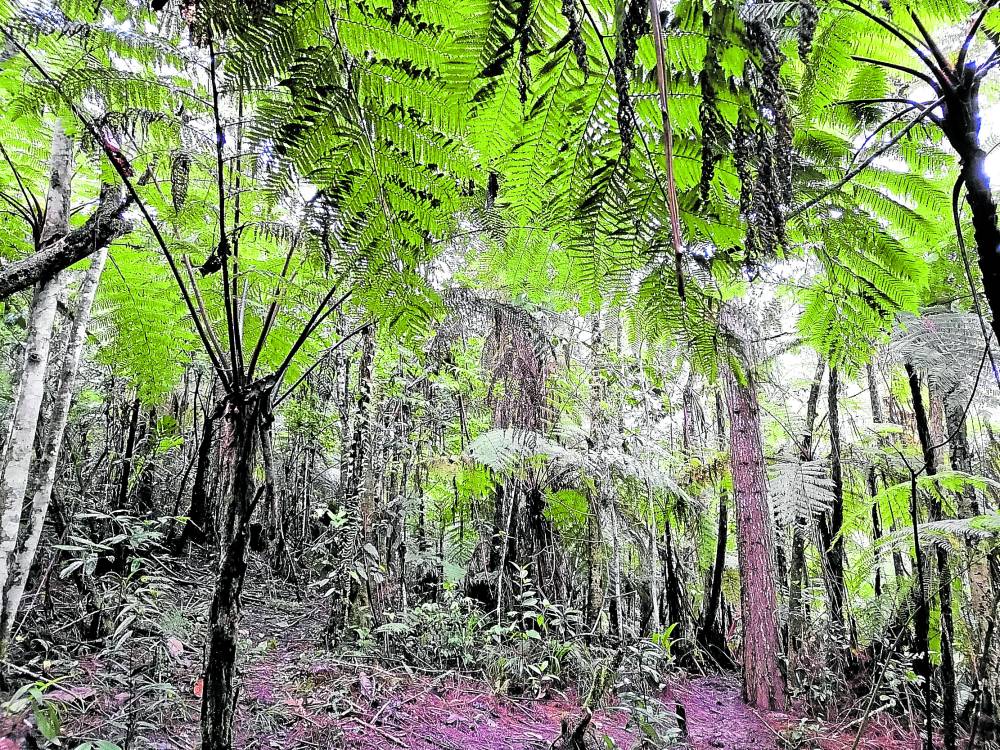
FUTURE HOME This forested area in Barangay Eden, Davao City, in this photo taken on February 27, 2023, will soon be the new home for natural pairs of Philippine eagles that will be relocated to this city-owned reservation from the Philippine Eagle Center in Barangay Malagos, also in Davao City. —JOSELLE R. BADILLA.
DAVAO CITY — The Philippine Eagle Foundation (PEF) will be moving its breeding facility within the 105-hectare Eden Tourism Reservation Area of the city government of Davao in Barangay Eden, Toril, here by next month.
Dennis Salvador, PEF executive director, said the city government has given them the go signal to use 13 ha of the reservation, located some 30 kilometers from downtown Davao, as the new homes for eagles bred in captivity.
According to Salvador, they have been planning and advocating with various stakeholders about the transfer of the breeding eagles from the Philippine Eagle Center in Barangay Malagos of Baguio District in the city, which is close to urban population, to a safer and more viable location.
The new Philippine Eagle Conservation Breeding Sanctuary (PECBS) sits more than 914.4 meters (3,000 feet) above sea level and will not be open to the public, unlike the Malagos facility.
“This 13-hectare area would become the new Noah’s Ark for our Philippine eagles,” Dr. Jayson Ibañez, PEF’s director for research and conservation, told reporters during a site visit on February 27.
READ: PH eagle tracked in study shot, wounded by poachers
Challenges
Among the challenges facing conservationists at the Malagos facility were threats of exotic diseases, avian flu, Newcastle disease and trichomoniasis that could afflict the raptors, Ibañez said.
Urban expansion and increased agricultural activities in areas around the Malagos facility also generated more threats and vulnerabilities to the national bird kept for captive breeding.
“There’s the issue of noise [levels] and the impact of agricultural [activities]. The current facility is close to private lots, current fields for corn and bananas, and they are also using harmful pesticides,” Ibañez explained.
He said they hoped to transfer their first three pairs of eagles to their new habitat by April 22, during the observance of Earth Day. The new facility will be holding a maximum of 12 eagles, he added.
Buffer zone
PECBS, he said, will have a 300-m buffer zone. It will house seven breeding chambers for natural pairs of Philippine eagles.
“We are very excited [with] starting natural breeding and natural rearing. Meaning, each pair would incubate the egg and take care of the chick,” he said.
READ: Philippine Eagle sighted in Davao de Oro’s Mt. Candalaga
“The place will have a food preparation area. We will also establish a hospital for our Philippine eagles; staff quarters, rehabilitation pens, quarantine pens; and, of course, fortification perimeter wall,” Ibañez said.
Andi Baldonado, PEF’s development program manager, said they were currently looking for funds to complete the breeding sanctuary, estimated to cost about P26 million for the first phase.
The PEF was created in 1987 after eagle conservation work ceased receiving support from the government. It has been the prime mover in eagle conservation, breeding, rehabilitation and education in the country. The foundation depends heavily on donations for its activities.